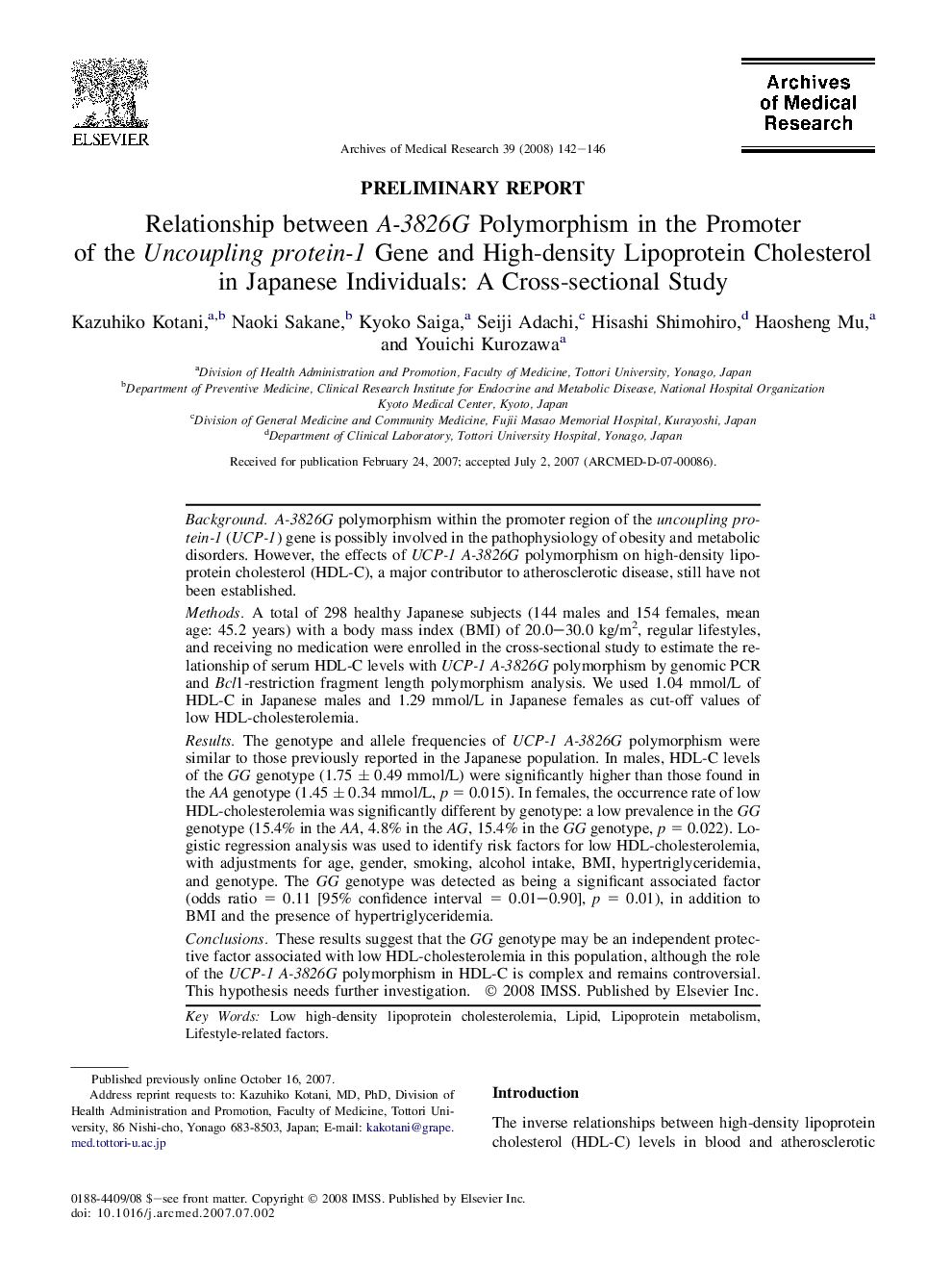| کد مقاله | کد نشریه | سال انتشار | مقاله انگلیسی | نسخه تمام متن |
|---|---|---|---|---|
| 3447402 | 1595522 | 2008 | 5 صفحه PDF | دانلود رایگان |

BackgroundA-3826G polymorphism within the promoter region of the uncoupling protein-1 (UCP-1) gene is possibly involved in the pathophysiology of obesity and metabolic disorders. However, the effects of UCP-1 A-3826G polymorphism on high-density lipoprotein cholesterol (HDL-C), a major contributor to atherosclerotic disease, still have not been established.MethodsA total of 298 healthy Japanese subjects (144 males and 154 females, mean age: 45.2 years) with a body mass index (BMI) of 20.0–30.0 kg/m2, regular lifestyles, and receiving no medication were enrolled in the cross-sectional study to estimate the relationship of serum HDL-C levels with UCP-1 A-3826G polymorphism by genomic PCR and Bcl1-restriction fragment length polymorphism analysis. We used 1.04 mmol/L of HDL-C in Japanese males and 1.29 mmol/L in Japanese females as cut-off values of low HDL-cholesterolemia.ResultsThe genotype and allele frequencies of UCP-1 A-3826G polymorphism were similar to those previously reported in the Japanese population. In males, HDL-C levels of the GG genotype (1.75 ± 0.49 mmol/L) were significantly higher than those found in the AA genotype (1.45 ± 0.34 mmol/L, p = 0.015). In females, the occurrence rate of low HDL-cholesterolemia was significantly different by genotype: a low prevalence in the GG genotype (15.4% in the AA, 4.8% in the AG, 15.4% in the GG genotype, p = 0.022). Logistic regression analysis was used to identify risk factors for low HDL-cholesterolemia, with adjustments for age, gender, smoking, alcohol intake, BMI, hypertriglyceridemia, and genotype. The GG genotype was detected as being a significant associated factor (odds ratio = 0.11 [95% confidence interval = 0.01–0.90], p = 0.01), in addition to BMI and the presence of hypertriglyceridemia.ConclusionsThese results suggest that the GG genotype may be an independent protective factor associated with low HDL-cholesterolemia in this population, although the role of the UCP-1 A-3826G polymorphism in HDL-C is complex and remains controversial. This hypothesis needs further investigation.
Journal: Archives of Medical Research - Volume 39, Issue 1, January 2008, Pages 142–146